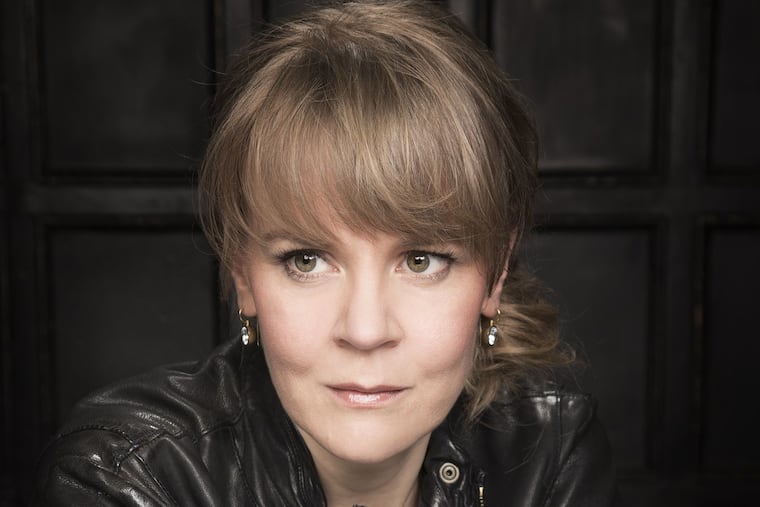Philadelphia Orchestra delivers post-Thanksgiving wake-up with Beethoven, Prokofiev and 90-plus newcomer Betsy Jolas
The outing at the Kimmel Center defied the odds with a near-full house and performances that would successfully combat any post-Thanksgiving snooze.

Expectations can’t reasonably run very high for a classical-music concert on Black Friday — aggressive acquisition and contemplative absorption seem mutually exclusive — though the Philadelphia Orchestra’s Friday outing at the Kimmel Center defied the odds with a near-full house and performances that would successfully combat any post-Thanksgiving snooze.
Guest conductor Susanna Mälkki framed the Beethoven Violin Concerto (Gil Shaham, soloist) with a new work by French modernist Betsy Jolas and Prokofiev’s epic orchestral wonder, the Symphony No. 5, delivering performances that were hyper-awake, sometimes insightfully so, sometimes not.
Though long known in modern music circles but not so much outside of her native France, composer Jolas (b. 1926) had a belated introduction to Philadelphia in this late-in-life (age 90ish) commission from Simon Rattle and the Berlin Philharmonic titled A Little Summer Suite (2015). An artistic descendant of Boulez and Messiaen, Jolas isn’t an easy composer, and anything she writes is bound to outgrow such a modest title. But like Elliott Carter (who composed until his death at age 103 in 2012), Jolas has entered her 90s with great clarity of intent in this engagingly cogent work, written with no preestablished system and almost in the instinctual spirit of jazz improvisation. Pure invention, in other words.
Tangentially inspired by Mussorgsky’s Pictures at an Exhibition, A Little Summer Suite began with a serpentine bass melody that evolved into refined orchestral textures full of short, fleeting motifs that popped up all over the orchestra, almost like a mirage making split-second appearances out of the corner of your eye. With such splintered content and periodic silences, how could there be any continuity? The piece was unified by its own splintering manner — until it wasn’t. Motifs grew into three, four, six notes. Then with a witty musical button, it was over. Given how widely the piece is being played, might this be Jolas’ greatest hit?
The piece’s success had much to do with Mälkki’s sense of continuity, and ability to pull together an orchestration with a large percussion contingent into a unified expression. That talent was also evident in Prokofiev’s Symphony No. 5, which brings together everything this great composer knew about opera, ballet and symphony with the kind of wartime edge that was inevitable with a 1944 completion date. In fact, Mälkki made the opening movement sing so effectively that I caught myself humming along with Prokofiev (sorry!) — and particularly enjoying the shimmering depths of the Philadelphia Orchestra sound. Much of the rest of the performance underscored the music’s high spirits, looking back to Prokofiev’s playful Lieutenant Kijé music from 10 years previous rather than forward to the Stalin-era protests that were to come in the Symphony No. 6. For me, a disappointment: Her approach was out of step with these anything-but-frivolous times.
Shaham’s Beethoven Violin Concerto performance, though, gave me everything I needed. At age 48, Shaham has given some road-weary performances (it happens to the best of them), though this was a summation of everything I’ve heard from him over the decades. From a purely violinistic standpoint, his playing was impeccable, and the sound quality had a consistent luster that ennobled his long-considered interpretive ideas. Mälkki’s considerable contribution was a framework — starting with the crisp, emphatic timpani played by Angela Zator Nelson — based in the historically informed performance movement with tempos that never lingered and a version of the Philadelphia sound that didn’t gold-plate Beethoven but had a back-lighting effect. Shaham didn’t play the cadenzas as much as launched them (like a rocket) with a clear foundation in what had come before but taking the performance to an edgier place.
The performance is repeated at 8 p.m. Saturday at the Kimmel Center. Tickets: $39-164. Information: 215-893-1999 or www.philorch.org.